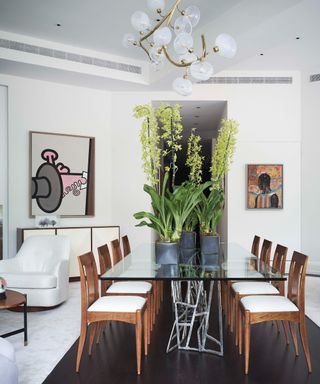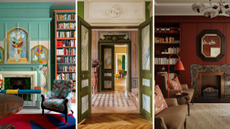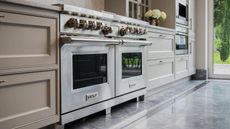3 top designers agree on this open-plan layout trick – to zone your space quickly
Looking to break up with your open plan? This clever, stylish solution is favored by those at the pearl of the industry


The appeal behind an open-plan living space is understandable: this layout is admired for its contemporary aesthetic and bright and airy qualities that remain sought-after in every type of home. However, it is not uncommon for open-plan owners to occasionally want to flirt with a more broken, zoned space – and when that time comes, it is hard to transform your home’s layout entirely.
So, rather than abandoning your open-plan living room ideas for good, it is better to follow the joint advice of three top designers who agree on the same effective layout trick. Their solution? Strategically placed area rugs.
Using area rugs to break up your open-plan space – the solution that is loved by designers

‘When designing with open floorplans, it’s best to break the space up with area rugs. This creates a definition for each section and gives the feeling of being in separate rooms,’ says Rozit Arditi, principal at Arditi Design. And she isn’t alone in her suggestion.
‘When designing with an open plan, you can use furniture and area rugs to create separate spaces within. The rug is a great place to start, as it sets the boundaries for a specific area,’ adds Elizabeth Sesser, the studio director at Ike Kligerman Barkley.
This solution offers the sense of separate rooms – whether you want to interrupt your open-plan kitchen ideas to create a boundary from where you cook and dine –or separate yourself from your working space when the day is done.

While many diverse rug ideas can differentiate between areas in your space, Michael Cox, principal at Foley&Cox, recommends using ‘two area rugs (one solid, one striped or patterned) instantly define zones in an open plan.’
Curating furniture as a ‘natural barrier’ in your space
To break up your open plan further, the designers similarly all urge you to use large furniture cleverly – whether you choose a double-sided bookcase or an ornate room divider that instantly converts the room.
‘Using larger furniture like a double-sided bookcase or decorative screen can then help to further divide the space while also giving some privacy from one area to the next,’ Elizabeth explains. While Michael suggests that these pieces act as ‘natural barriers’ that can help delineate rooms within an open space.’

‘Another tip is to separate the ‘rooms’ with a console or sofa table to break up the space. I’ve also designed open floorplans with multiple sofas to help delineate areas for reading and watching television,’ Rozit adds.
Whether you start with the rug trick, or you go a step further and interrupt your open plan with large furniture, you can rest in the knowledge these tips are entirely designer-approved and instantly effective.
Sign up to the Homes & Gardens newsletter
Decor Ideas. Project Inspiration. Expert Advice. Delivered to your inbox.

Megan is the Head of Celebrity Style News at Homes & Gardens. She first joined Future Plc as a News Writer across their interiors titles, including Livingetc and Real Homes, before becoming H&G's News Editor in April 2022. She now leads the Celebrity/ News team. Before joining Future, Megan worked as a News Explainer at The Telegraph, following her MA in International Journalism at the University of Leeds. During her BA in English Literature and Creative Writing, she gained writing experience in the US while studying in New York. Megan also focused on travel writing during her time living in Paris, where she produced content for a French travel site. She currently lives in London with her antique typewriter and an expansive collection of houseplants.
-
 7 reasons why decorative plasterwork is such an enduring trend
7 reasons why decorative plasterwork is such an enduring trendThe centuries-old tradition of adding molded details to walls and ceilings is still omnipresent. We explore some of the tried and tested ways it can enhance your home with the help of 7 experts
By Arabella Youens Published
-
 You can clean an oven with a dishwasher tablet – but how effective is this hack?
You can clean an oven with a dishwasher tablet – but how effective is this hack?I tried three of the internet's most unusual oven-cleaning hacks to find out which of these unique methods is most effective
By Thomas Litten Published